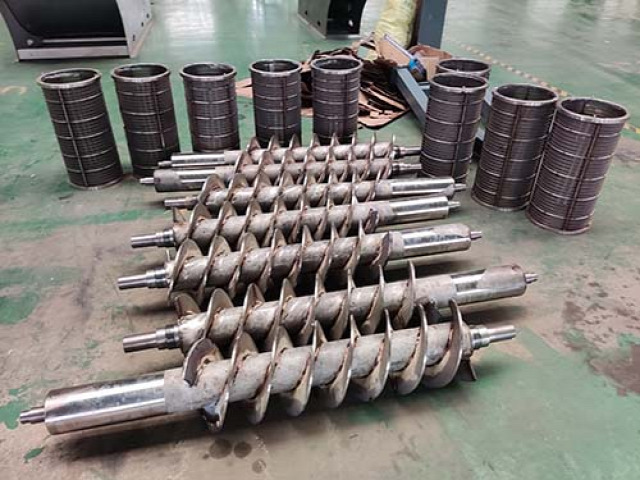A screw press manure separator is a type of equipment used in agriculture and farming to separate solid and liquid components from manure or slurry. It's particularly useful for managing animal waste on farms and reducing environmental impacts. Here's everything you need to know about screw press manure separators:
1. Purpose:
Screw press separators are designed to efficiently separate solid and liquid fractions from animal manure or other organic waste. This separation process makes it easier to handle, store, transport, and utilize both the solid and liquid components.
2. Working Principle:
The basic principle of a screw press manure separator involves using a screw mechanism to press and squeeze the manure or slurry against a screen or filter. As the material is forced through the screen, the solid particles are separated from the liquid, resulting in two distinct fractions.

3. Components:
- Screw: This is the key component that applies pressure to the manure, pushing it against the screen. The design of the screw determines the efficiency of separation.
- Screen: The screen is typically a mesh or perforated surface with openings of varying sizes. It allows liquid to pass through while retaining solid particles.
- Inlet: This is where the raw manure or slurry is introduced into the separator. The feeding system can be customized according to the materials you need to procss.
- Outlet: Separated liquid and solid fractions exit the separator through separate outlets.
- Drive System: A motor or engine drives the screw, providing the necessary force for separation.
4. Considerations:
When selecting a manure separator, consider factors such as the size of your operation, the volume of waste you need to process, available space, maintenance requirements, and potential downstream uses for the separated fractions.
5. Integration with Biogas Systems: In some agricultural setups, screw press manure separators are integrated into biogas production systems. Biogas is produced through the anaerobic digestion of organic materials, including manure. The separated solid fraction from the screw press can be fed into biogas digesters, contributing to the production of renewable energy in the form of biogas.
6. Environmental Benefits: Using a screw press machine can significantly reduce the environmental impact of animal waste. By separating solids from liquids, the potential for nutrient leaching into groundwater is reduced, minimizing water pollution. Additionally, the production of biogas from the separated solids contributes to sustainable energy generation.
7. Economic Considerations: Investing in a screw press machine involves initial costs, but the long-term benefits often outweigh these expenses. Reduced environmental impact, improved waste management, and potential cost savings from utilizing separated fractions all contribute to the economic viability of these systems.
In summary, a manure separator is a versatile and environmentally friendly tool that aids in the efficient management of animal waste. Its applications range from nutrient management and renewable energy production to reduced environmental impact and improved farm economics. Choosing the right separator and implementing proper maintenance practices will ensure its effective operation over time. More details can be found:
| https://tzmachines.com/. |



